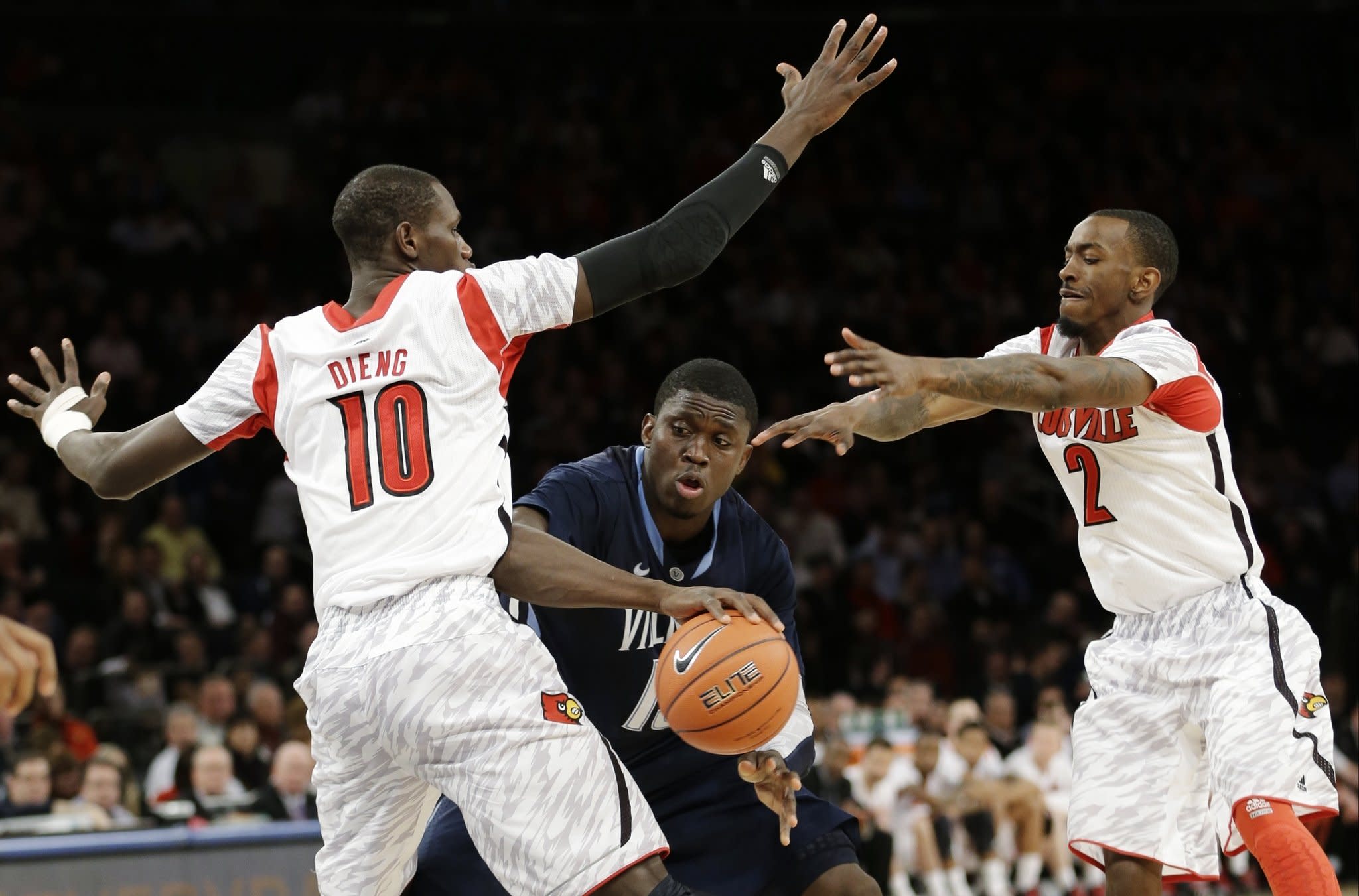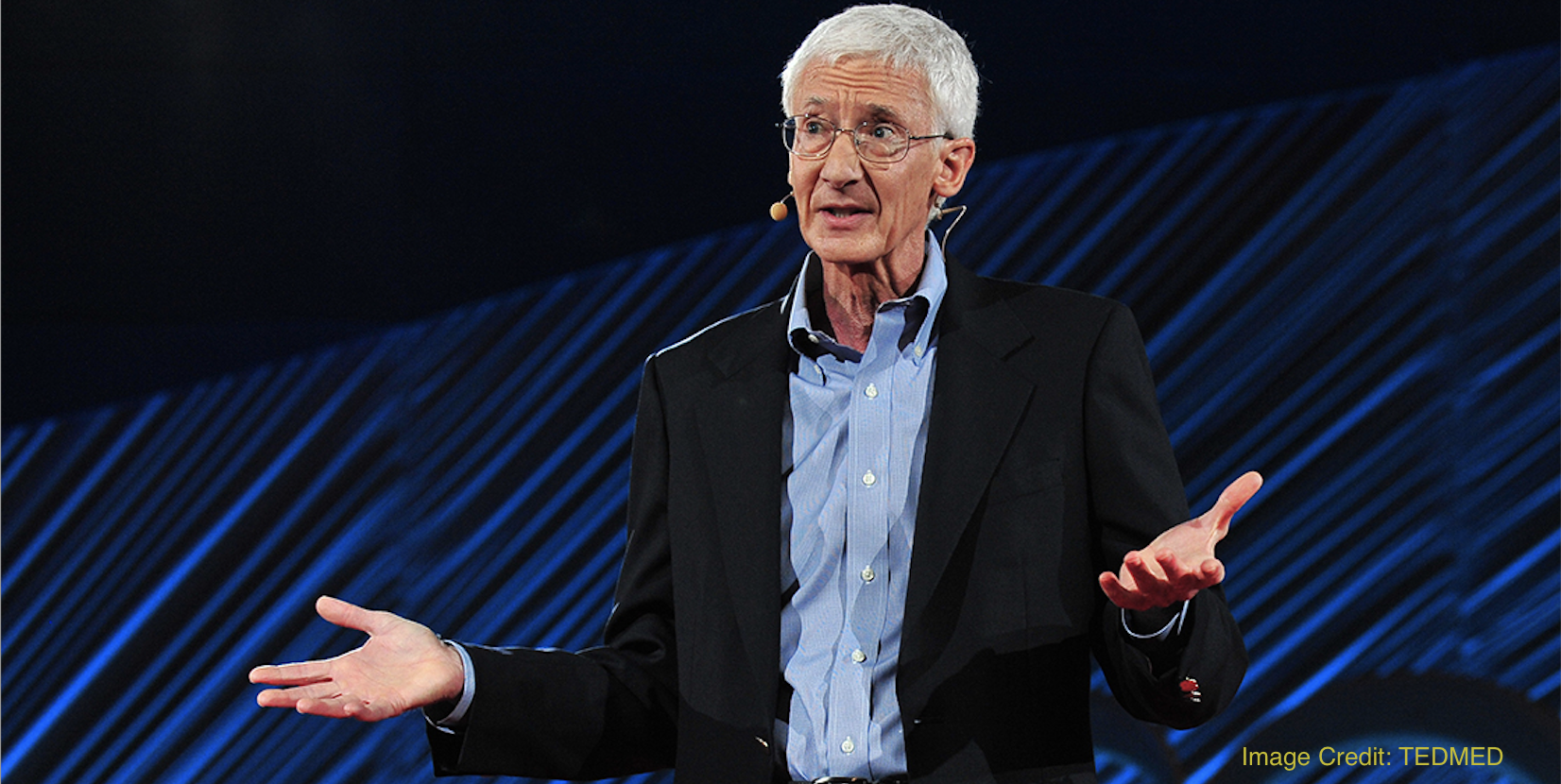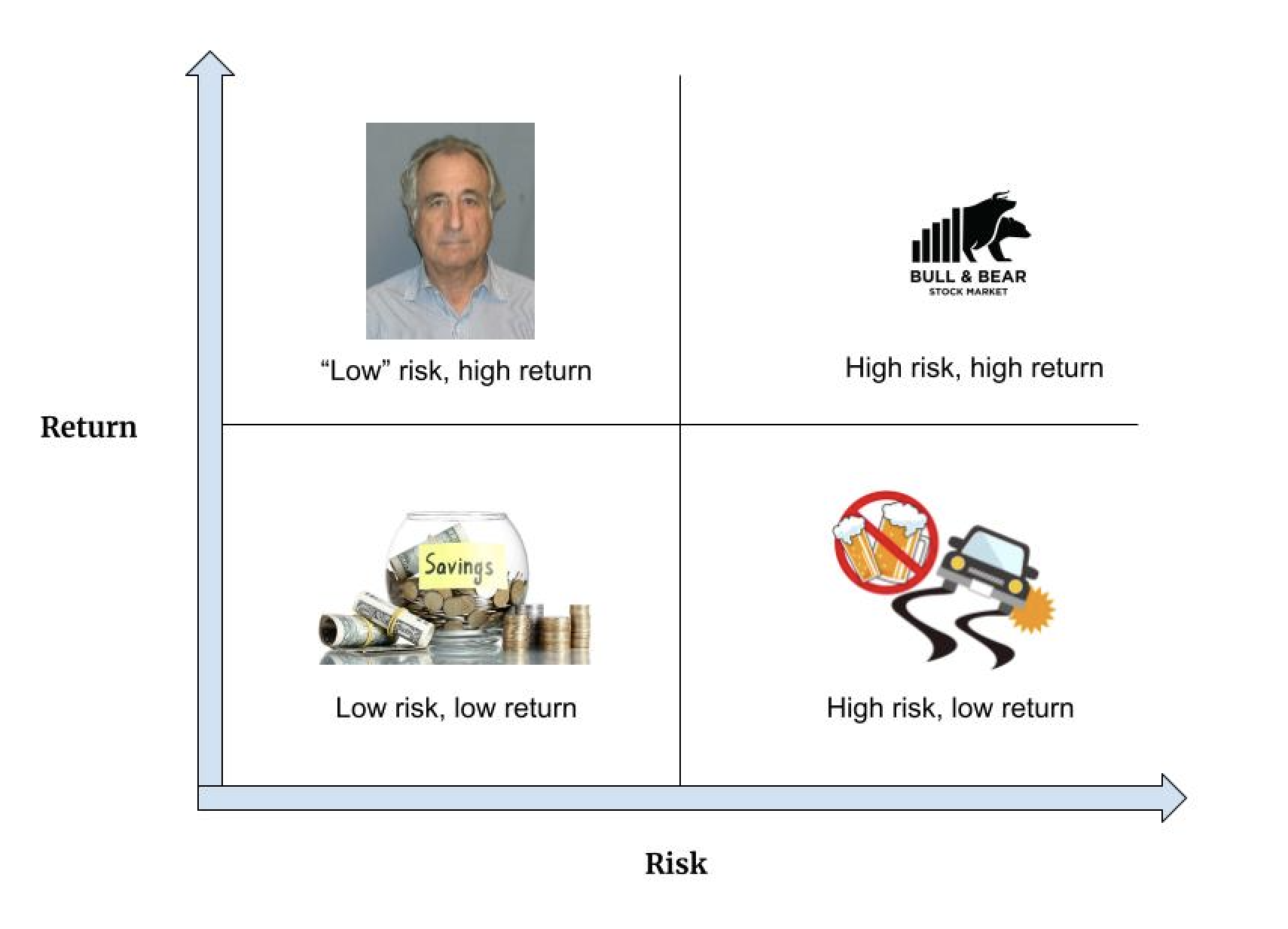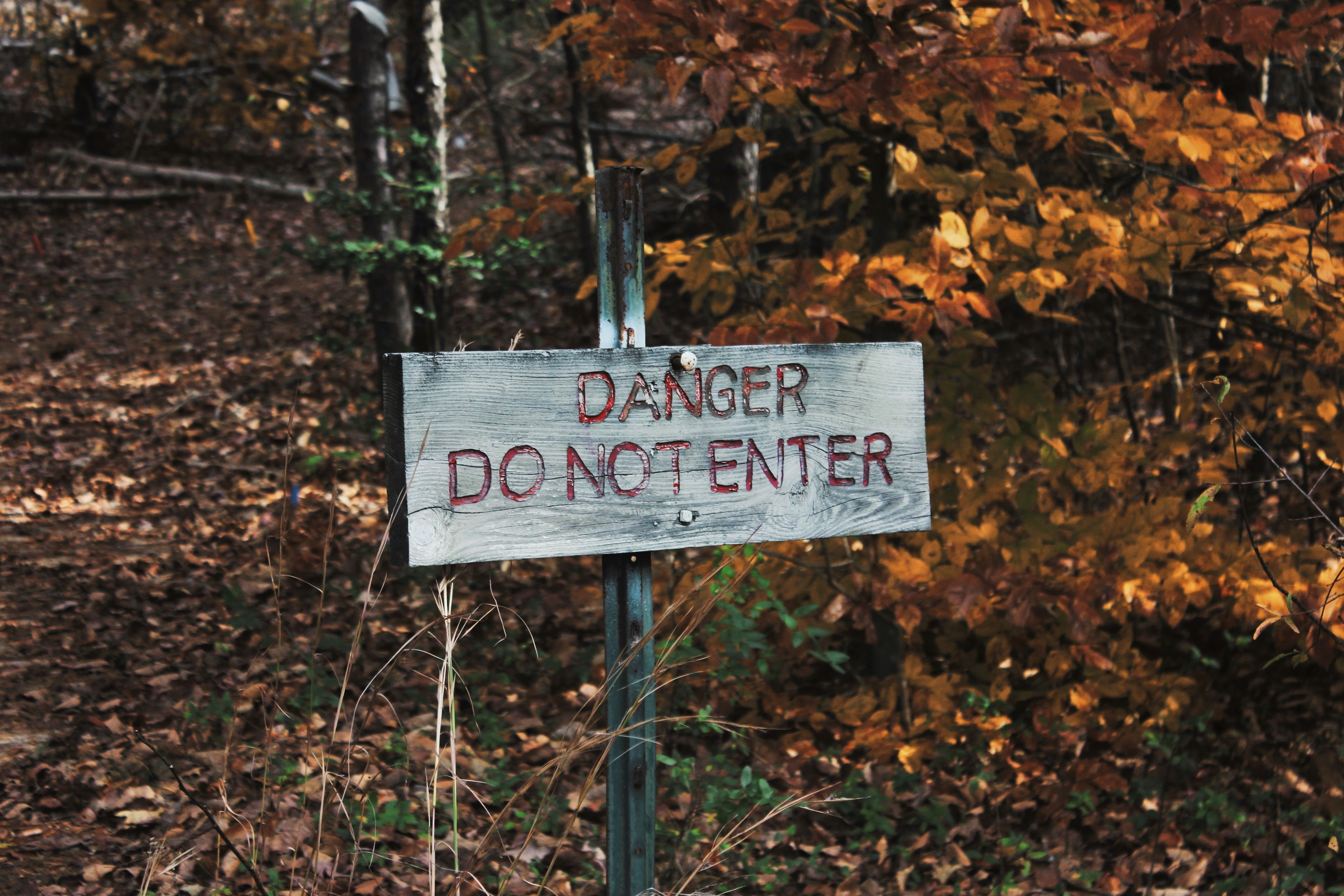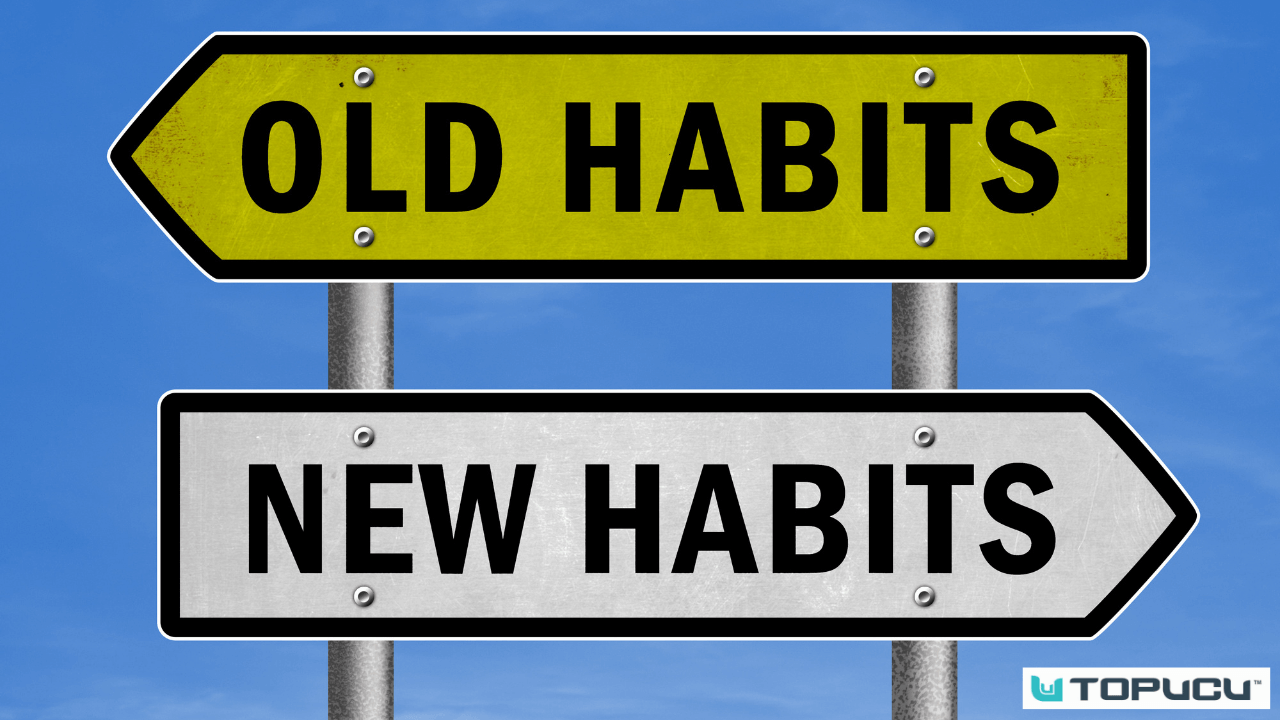10 for 10: Louisville’s all-Decade Team
As my postgame ecstasy receded after the “roadkill” win at UNC, a strange feeling crept in. It was identical to how I felt after the Michigan State win. Was it the relief of seeing something good happen to our football/basketball programs? Nostalgia for the innocent days of Russ and Teddy—great memories that had been gradually repressed by 4.5 years of scandal and shaming. Cautious joy? I’d learned that great sports days always preceded a massive gut punch.
For the 55 months between the 2014 “end of an era” loss to UK and the early-season MSU win, we became conditioned to expect the worst: the Katina Powell scandal; the bright year of Damion Lee ending with a self-imposed postseason ban that NCAA used against us; having a generational QB who wasn’t protected when it mattered; the Adidas scandal being the precursor to the vacated “Thoughtcrime” 2013 title; missing the NCAA tourney during a feel-good Padgett season by losing to UVA in a way that still doesn’t seem possible; going 2-10 and genuinely believing that Bobby was trying to get fired. I’ll stop there.
It wasn’t all bad (Lamar, Donovan, Raymond, Trez, Terry, etc.), but if you showed an objective human the benefits and drawbacks of being a Cards fan from 2014 through 2018, you would be laughed at. Sports suffering is not a real suffering, but at some point in those 55 months, every Cards fan reached rock bottom. For me, this was the Deng Adel travel vs. UVA, and immediately knowing how that movie would end. To avoid letting a college sports team affect my actual life, I became numb to it all, shrouding myself from sports misery, but shrouding myself from unadulterated sports joy—the best part of being a fan—in the process.
Rather than recount all my gripes with the NCAA and its exploitative labor system and arbitrary punishments, I will merely describe my attitude these last few years as a mix of “F the NCAA, we’re being wrongly victimized, guess they’ll just ignore Michigan State, how could our administration be so stupid and ruin it for the players and fans, surely this all has to end soon” and finally, “at least we still have Donovan and Lamar in our lives.”
I wouldn’t drag you back into this house of horrors without good reason. The 2014 tournament loss felt like more than a tough March loss. It felt like the abrupt end of a span of joy and memories that I could share with fellow Cardinal fans for decades to come. I thought that losing at the hands of UK was especially bad, but never did I realize how much worse things could get. Sports fans expect some lows, but they don’t expect an arbitrary cartel to retroactively take away the highs.
I now realize that the feelings I have after big wins in 2019 are suppressed pangs of joy, the awaited thawing of sports-fan numbness. For several years, it hasn’t been in our rational interest to get our hopes, but if it could get so much worse than I imagined in 2014, it can get so much better than my modest expectations as we inch towards 2020. January basketball was proof of this.
It’s hard to fathom that such extremes could happen to a single program in a decade, but all was not lost. Yes, the scandals I could do without, but having some degree of lows makes the highs more special—until the NCAA says that moving the banner from the arena to a nearby building means your high never happened.
This decade has taught me what it means to be a Cards fan in the grand scheme of things, for my age and the state of the program aligned. I was in high school during the Russ years, so the magic and mystique of college basketball still existed. I was in college during the plunge into college sports hell, so my cynicism with the NCAA coincided with the emotional detachment of watching guys my own age lose games. Now, as a neophyte member of society, I don’t need the childhood magic to be a huge fan. It’s just a game, but in an age when coming together is rare, I can now just enjoy being part of a community who cares so much about how a bunch of kids play basketball and football. Especially when we don’t suck.
If history tells us anything, it’s that Chris Mack is here to stay. With this in mind, it would be an injustice to not appreciate the most memorable players to suit up during such a memorable decade. We’ll cover the honorable mentions before getting into my top ten. Statistics are from sports-reference.com, ESPN, and the official 2012 Louisville record PDF.
(Fun fact: Stephan Van Treese saw the floor for Louisville in 2009 and Akoy Agau has entered games in 2019, and somehow there were five games in which they both scored. Never graduate.)
Honorable Mention (from easiest to hardest omission)
Wayne Blackshear (2011-15)
Best season ‘13-’14: 8.2 PPG, 3.1 RPG, 40% 3FG, only 20 MPG
One sentence: The likeable-but-frustrating forward stormed onto the scene with his freshman putback dunk against UK in the Final Four, but as Pitino said after the brutal missed free throw in the 2014 Sweet Sixteen, Wayne was one of the few Pitino-era players to never make a leap.
Samardo Samuels (2008-10)
Best season ‘09-’10: 15.3 PPG, 7.0 RPG
One sentence: Samardo, the number two recruit in the nation per Scout, was productive in the post in his two seasons with the Cards, even if he didn’t live up to the #2 billing.
Quentin Snider (2014-18)
Best Season ‘17-18: 11.8 PPG, 4.0 APG, 42 3P%
One sentence: It’s not easy to be the four-year point guard that succeeds Russ and Peyton, so Q was oft underrated as a shooter and distributor, and his crossover on Bam Adebayo to ice UK was a sweet moment during the Dark Ages.
Chane Behanan (2011-13)
Best season ‘11-’12: 9.5 PPG, 7.5 RPG as a freshman
One sentence: The missed dunks and off-court issues/dismissal don’t need rehashing, but his physicality in the 2012 Elite Eight and 2013 NCAA run made him an invaluable force down low.
Deng Adel (2015-18)
Best Season ‘17-’18: 15.2 PPG, 5.2 RPG, 2.8 APG
One sentence: Closely mirroring Ray’s upward trajectory and lack of tournament experience, Deng would likely be ranked higher if he came around in 2012, where his two-way talent could have been unleashed in the Wayne Blackshear role.
Christen Cunningham (2018-19)
Season thus far: 10.5 PPG, 5.0 APG, 40 3P% in 25 games
One sentence: The new staff constantly raves about CC’s leadership, and were it not for a lone season on the squad, his unselfishness, poise, maturity, and efficiency would land him right around the 10 spot (despite his occasional dribbling issues).
Ray Spalding (2015-18)
Best Season ‘17-’18: 12.3 PPG, 8.7 RPG, 1.5 STL, 1.7 BLK
One sentence: Ray started realizing his freakish two-way potential in his last season, and his per-minute numbers tantalized Cards fans for his entire career, a career in which tournament success is the only thing keeping him from being higher on my list.
Damion Lee (2015-16)
One Season: 15.9 PPG, 3.9 RPG, 1.5 STL
Thoughts: Damion was an offensive force in his lone season with the Cards, honoring Russ Smith with a 27-point, zero-assist game in a close loss at UK. Dame was an above-average defender as well, and is unquestionably one of the top 8 most talented players of the decade. Alas, his FG% understandably tanked after the self-imposed postseason ban was announced on February 5 that left Trey Lewis and Dame in tears. Sadly, when I think of Damion, I think of both his effortless shotmaking and his postseason robbery. I slightly favor longevity and postseason success on this list—hence Snider over Trey, and Dame narrowly missing the top 10.
The top 10
10. Preston Knowles (2007-11)
Best season ‘10-’11: 14.6 PPG, 3.1 APG, 1.9 STL
The less great: Frankly, PK did not have the numbers of Damion and most guys above him on this list, especially once the offensive burden fell on him as a senior. Largely because of this outsize burden, he shot only 34% from the field in his senior conference games.
The great: Despite being in slightly over his head as a sole offensive creator, PK was a defensive bulldog for four years, and his significance to the program goes beyond the numbers. The Cards were in transition in the first year of the Yum! Center, and Knowles not only led the Cards to the tournament, but also passed the torch to the Russ/Peyton era of Louisville’s backcourt. He was sadly injured against Morehead and couldn’t stay to reap the rewards of 2012, but you can bet the next backcourt owes some success to PK. He also pulled off the Miracle on Main almost by himself:
T-9. Dwayne Sutton (2017-present) Sutton 2018-19: 10.9 PPG, 6.7 RPG in 26 games
Yes, I cheated and made it a top 11, but I just couldn’t ignore Sutton’s role in the surge this year.
The less great: Sutton was a young player on the Padgett team that fell short of a fun NCAA berth in brutal fashion. Dwayne has occasionally disappeared on offense (0-3 FG against UK), so it’s fitting that I pair him at the nine spot with another Cardinal do-it-all favorite who oft disappeared against Kentucky.
The great: Sutton’s career high at Louisville is only 19 points, which limits his ceiling on this list, but his all-around game has been indispensable. Ask people who have watched Louisville closely this season and they will rave about Sutton’s attitude and toughness in a way that his stats don’t always indicate. He’s one of the few Cards that could seamlessly fit into any team this decade, and he will keep getting better.
T-9. Kyle Kuric (2008-12)
Best season ‘10-’11: 10.8 PPG, 3.9 RPG, 0.9 STL, 44 3P%
The less great: In my mind, Kuric always disappeared against UK, and the stats mostly back this up. In the three matchups during his junior/senior seasons, his 11 fouls and 16 points while playing heavy minutes was one of his few disappointments as a Card.
The great: Defenses keyed on him much more in his final season, so “Kyle’s Korner” was at its peak during his efficient junior season. It was also the year of that dunk. His leadership role was indispensable as a senior as he led the Cards to their first Final Four since 2005. He had a propensity for the memorable: his layup from PK against Marquette to end the “Miracle on Main” and his performance against #1 Syracuse in the Freedom Hall finally will always exceed his statistical production. As they should. Those moments were awesome.
8. Jordan Nwora (2017-present)
Best season ‘18-’19: 17.5 PPG, 7.7 RPG in 26 games
The less great: After a normal-but-promising freshman year coming off the bench, Nwora has made progress from an effort-based defensive minus to a solidly average defender.
The great: It’s easy to compare Nwora’s season to 2011-12 Russ, a season that ended in the Final Four (not jinxing). Both guys made huge sophomore leaps, but the comparisons end there. (The more that I think about it, the 2012 team has many parallels with this one). While Russ was a menacing defender, he averaged 7 PPG fewer than Nwora is putting up, and Nwora is way more efficient. Quite frankly, Nwora is much more like sophomores Terry and Donovan—NBA mainstays. Nwora is extremely likely to declare for the NBA this year since it’s a weak draft overall and his stock can only go down with such a good incoming class. Though he lacks the two-way game and physicality of Terry and Donovan, I think we’ll be hard-pressed to find more efficient volume scorers on this list by season’s end (and I might have to bump him up a few spots).
7. Luke Hancock (2012-14)
Best season ‘13-’14: 12.3 PPG, 2.6 RPG, 2.2 APG
The less great: Before hitting a dagger three against Syracuse in March 2013 to keep the eventual championship streak alive, Luke had struggled from deep (39-115 3FG), and many Cardinal fans voiced their displeasure at the lack of shooting from the “shooting transfer.” Luke was never a great defender, and he lacked the elite athleticism of Kuric, Siva, Trez, etc. to compensate for poor shooting. Luke had never scored 20 points in a Cardinal uniform in a 4OT-or-fewer game as he entered the 2013 Final Four, so expectations were tempered.
The great: We all know how this story ends. All Luke did in the Final Four was go 8-10 from three, score 42 points on 15 FGA and 0 turnovers, make multiple clutch plays against Wichita St., and bring a team and city back from the dead at the end of the first half vs. Michigan. Luke made up for his lack of quickness with the best, most exaggerated shot fake of any player this decade, and his basketball IQ (see: jump ball vs. Ron Baker) was at the Donovan-Siva-Gorgui level. He backed up his Final Four Most Outstanding Player performance with a slumpy shooting season, but in the first round of the 2014 tournament, Cool-Hand Luke bailed his squad out again. His lack of longevity and peak production keep him out of the top six, but his stature in the Louisville community is untouchable, mostly because of this:
("That video never happened." - NCAA)
6. Peyton Siva (2009-13)
Best season ‘10-’11: 9.9 PPG, 5.2 APG, 3.1 RPG, 2.0 STL
The less great: Before the 16-game run to end the 2013 season, Siva had a stretch that reminded too many Cards fans of crunch time Edgar Sosa’s desperation drives to the hoop: in a four game January lull after the team reached #1, Siva went 7-31 from the field, missing a game winner against Georgetown and throwing it away at home against Syracuse. He was a minus shooter, but as the quarterback of a Final Four team from the year before, we knew he needed to provide just enough offensive production down the stretch.
The great: He unquestionably brought that offense when it mattered most (34 points, 9 assists, 2 turnovers against Duke and Michigan in the tournament) and cemented himself as a Louisville legend in the process. Any guy that comes in as a freshman throwing down reverse dunks (see: Donovan) and averages nearly 4 steals per 40 minutes will have lofty expectations thrust upon him. His journey to fulfill the expectations was circuitous, but starting 113 games for any Louisville player is an insane number, and he finished his career with 16 straight wins. Not bad. Beyond the winning, his athleticism and defense are most memorable, and he was actually second on the championship team in scoring—a number that pleasantly surprised me.
This was Peyton Siva in one play:
5. Gorgui Dieng (2010-13)
Best season ‘12-’13: 9.8 PTS, 9.4 RPG, 2.0 APG, 2.5 BLK, 1.3 STL
The less great: Gorgui took less than one shot every five minutes over his last two years and he never averaged double-figure scoring while at Louisville. He’s the only player in this top 10 to not average 10 points in any season.
The great: Gorgui didn’t need to score 10 points every game for Louisville to make back-to-back Final Fours and win a title. He was the best low-post defender that Louisville has had this century, averaging 3.8 blocks per 40 minutes over his three seasons. From the day he was the intriguing Senegalese freshman (Louisville PA announcer Sean Moth would yell “Ding” because nobody knew anything about Gorgui or his last name) to the day he was a polished winner of his last 16 college games, Gorgui was an unselfish player and great teammate. He developed legit shooting touch for a center by his junior year and was probably the best passing center Louisville has seen since the days of Padgett. While Gorgui was loath to shooting it 8 times per game, his aggression positively manifested itself in all other facets of basketball.
4. Terry Rozier (2013-15)
Best season ‘14-’15: 17.1 PPG, 5.6 RPG, 3.0 APG, 2.0 STL
The less great: Terry only played two years, and his FG% was never solid because he was half of the offense in 2015. It’s hard to nitpick his game; there’s a reason he’s a contributor on a top NBA team.
The great: I don’t think I remembered how good Terry was until seeing his 2015 numbers. The dude could straight rebound for a guard and he scored as well as any Cardinal player since 2000 from the midrange. The 2015 squad lacked depth and was somewhat overshadowed by the three previous teams due to style of play, but Terry and Trez were truly dominant come March. After the Chris Jones February departure, T & T dragged the depthless team to within one Mangok Mathiang free throw of the Final Four. Terry’s poise and all-around polish were evident as a freshman, and if you throw Dwayne Sutton onto the 2015 squad, there would likely be another banner hanging in/somewhere near the Yum! Center.
3. Donovan Mitchell (2015-17)
Best season ‘16-’17: 15.6 PPG, 4.9 RPG, 2.7 APG, 2.1 STL
The less great: He shot only 41% as a sophomore and isn’t as good as LeBron James. Ridiculous.
The great: I seriously considered putting Terry at three before I looked back at Donovan’s sophomore season. His game-to-game improvement over his two seasons was remarkable. In his first season with the Jazz, coaches raved that Donny could implement technique from the film room as well as any player they had ever seen, which makes sense if you watched him from one game to the next at Louisville. Donovan’s athleticism was eye-popping from day one. The way he exploded on jump shots and seemingly glided across the floor puts him in a class of Terrence Williams and maybe nobody else for the title of “best athlete of any Cardinal basketball player since 2000.” With each passing game, fans could see him figuring it out in all aspects of the game. While he evidently made the right decision to leave, it’s scary to think about how good he would have been in year three. Terry and Donovan were the two best sophomores this decade, although the next guy gives them a run for their money.
Here’s Donny making other benches cower in fear.
2. Montrezl Harrell (2012-15)
Best season ‘14-’15: 15.7 PPG, 9.2 RPG, 1.2 BLK, 57 FG%
The less great: Trez was never much of a shooter or passer, but that’s like criticizing Siva for not defending the post better. Trez was so intense by his third season that the coaches had to tell him to be mildly less brutal to the young guys.
The great: Like a bigger Chane with a bigger motor, Trez burst onto the scene as one of the more physically imposing freshmen Cards fans had seen. Though it took some time to develop his offensive skills, Trez had major moments down the stretch of the 2013 NCAA run, including an acrobatic putback against Wichita St. and the unforgettable dunk against Michigan (see: Luke video).
All he did from there was put up 13 win shares in his final two seasons, a crazy number that was only exceeded by Russ Smith. By Trez’s third season, he truly looked like a man amongst boys at the college level, and he got to the rim at will despite facing constant double teams. As I mentioned above, he and Terry incredibly carried a group of mostly young players to within a free throw of another Final Four. Yes, the stats are impressive, but the physicality, intensity, and ferocity of his blocks, rebounds, and jams needed to be felt in person.
The man dunked angry: Trez Dunk Reel
1. Russ Smith (2010-14)
Best season ‘13-’14: 18.2 PPG, 4.6 APG, 2.0 STL, 39 3P%
The less great: Russ had no conscience, which was often what the doctor ordered for his teams, but not often what the doctor ordered for the fans’ cortisol levels. I am still mildly traumatized by every Russ possession in the waning moments against Michigan. Unlike Siva, Russ made almost no impact as a freshman, and despite his emergence in December 2011, Russ was significantly less efficient in his breakout 2011-12 than his teammate Chris Smith was in the same season.
The great: We knew Russ had scoring potential before his junior year, but few people saw that coming. Russ jumped from 11.5 PPG as a sophomore to nearly 19 PPG during the 40-game championship campaign. He averaged 25 PPG in the tournament before a down game against Michigan (thanks again, Luke).
In the previous campaign, Russ’s emergence in December 2011 as a fearless shooter was a key factor in Louisville’s first Final Four since 2005. Against Kentucky, Russ came off the bench and scored 30 of Louisville’s 62 points, almost taking down the famed Anthony Davis team in the process. The following season, Russ scored 21 in Louisville’s Final Four-revenge win.
Russ put up more than 1400 points in his last two seasons, and finished only 37 points behind Reece Gaines—Louisville’s top scorer this century and 4th all time—despite his lost freshman season. His 488 career free throws put him second behind LaBradford Smith (491). He finished as Louisville’s all-time steals leader (257), breaking the record of 254 set by his teammate, Peyton Siva. Before going over the numbers, I would have said that Russ gambled and fouled more than Siva, and that Siva was the better on-ball defender. I was wrong. Amazingly, Russ had 58 fewer fouls than Peyton and broke his record despite playing 500+ fewer minutes and 11 fewer games.
I tend to remember Russ more for his playing style and Russdiculousness than his production, but the numbers do not lie. We can say this about most of the 2013 team, but there is no national championship without Russ Smith. The combination of instant offense, historically great defense, and a penchant for fearlessness in big moments earns him the top spot—just ahead of four NBA staples. I firmly believe that in the Chris Mack system, Russ would be putting up 20+ points per game.
If you read this far, I seriously hope you have some interest in Louisville basketball. For your sake.

